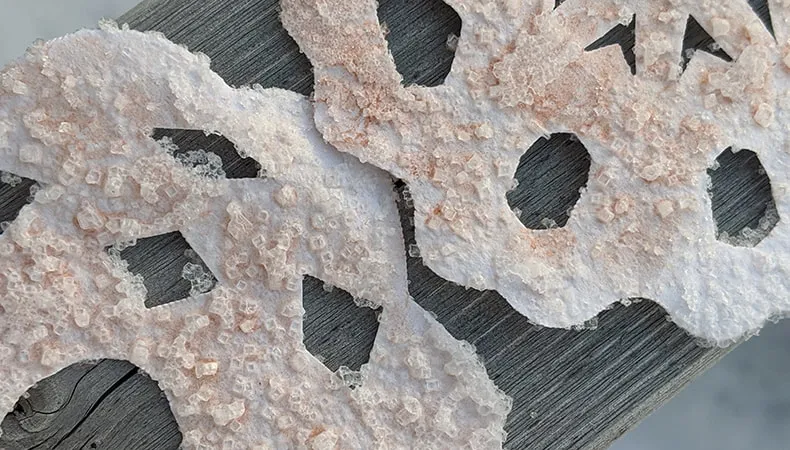
Materials
- Paper (in the colour of your choice)
- Scissors
- Salt
- Hot water
- A shallow dish or plate
Method
Cut out your paper snowflake! Use your creativity or follow these steps:
- Cut your paper into a circle or square.
- Fold your shape in half a few times.
- Start cutting shapes and designs starting from the different edges.
Adult supervision and/or assistance may be required for this step.
Start with ½ cup of the hottest possible tap water (alternatively, you can use boiled water).
Add in salt one tablespoon at a time, mixing to dissolve into the water. Add as much salt as possible until it stops completely dissolving. You now have a saturated solution.
Unfold your snowflake and place flat on a plate. Pour the saturated solution over the paper snowflake until it is just barely covered.
Let sit for a few days until all the water has evaporated and the salt has crystallised. The salt will form cube-shaped crystals on the side of the snowflake that faces up.
Explanation
The Science behind the Shape
Real snowflakes always have six points. Ice crystal molecules merge together in a hexagonal shape. Taking a closer look, you’ll notice the salt crystals left behind on your paper snowflake is cube-shaped. You can observe this phenomenon with the naked eye, or with a magnifying glass to get a closer look. Try to catch a snowflake falling from the sky to compare the different crystal structures.
Discover Dissolution
You might want to use your senses (sight, smell, touch, taste) to observe the water before and after the salt is dissolved into it. It will certainly taste and smell different. It might look the same as before, or it might look slightly cloudy.
If the liquid is still cloudy, the salt particles are still suspended in the water, as opposed to being truly dissolved. As you continue to stir, the salt particles will break into smaller and smaller pieces and disperse into the water and the solution will gradually become less cloudy until the salt is completely dissolved.
Once the liquid turns clear, where has the salt gone? By tasting the water, you will find that the salt hasn’t “disappeared.” Once the water evaporates and the salt remains crystalized on your snowflake, you will be able to see physical proof that the salt has been there all along!
One Step Further: Harvesting Salt
Before humans learned to commercially produce salt, a process very similar to the experiment you just conducted was used. In solar salt production, the sun was used to evaporate the water from shallow pools of seawater. This method required long periods of evaporation time and required a certain climate – very little rainfall, lots of wind, high temperatures and lots of sunshine (think about what weather conditions help clothes hung on a clothesline dry the fastest).
Nowadays, commercial solution mining allows us to collect a lot more salt in a lot less time. Table salt is most often harvested by spraying water into layers of salt found on the surface or in between layers of rock. Once the salt dissolves, the liquid is pumped to a plant where it is boiled to evaporate away the water until only salt is left. To prepare the salt for us humans to consume, it will be washed, rinsed, and refined.
